Scratchbuilder
SMF Supporter
- Joined
- Jul 2, 2022
- Messages
- 1,943
- Points
- 113
- First Name
- Mike
Looks better every time I pop in to see how the build is going.
From what I have read, and without looking back through, I think one of the pictures you have posted confirms this, only the driver would be in the tank when coming off the landing craft into the water, the rest would sit on top just in case, then get in once on solid ground.I think I would be nervous too — the manual doesn’t say to actually test the waterproofing, it just assumes the crew does the work correctly …
Then I have some more for you, about that waterproofingOf the 14 tanks landed at Westkapelle on 1 November 1944, only four or perhaps five didn’t drown … However, none drowned in coming ashore — the rest got stuck on the remains of the dyke and, despite frantic efforts to tow them out with other tanks and armoured bulldozers, drowned when the tide rose too high.
For example, from the war diary of 87 Assault Squadron, Royal Engineers:
It says LCT 757, but that should be 737, which carried assault group Bramble (though the Royal Engineers consistently talk about “lanes” where 1 Lothians and Border Yeomanry, who supplied the Crabs and Sherman command tanks, refer to “assault groups”).
The same war diary also has this report from assault group Apple, carried in LCT 1005:
The bridge AVRE referred to above is not T68927, number A2A, that I’m building, but A2B (the “me” is Lt. J C Ramsay of the Royal Engineers). Just the other day, I came across this picture, that I had never seen before, in a Canadian movie news report about the landings:
View attachment 485867
Visible there is LCT 1005, the SBG bridge lying from its bow ramp is clearly visible, as are the two Crabs bogged down this side of it and one behind; AVRE A2B was either to the right of the picture or still inside the LCT, and in either case, A2C (“fascine AVRE” in the report) is also inside the LCT at this point, because it got stuck on the bridge after landing.
Notice the report mentions A2A as being used to try and tow others free. It ended its war a bit higher up on the “beach” but never did make it into the village, but it’s not clear to me why. It doesn’t look like it got stuck, but maybe it did, just not as badly as the others?
Thanks. Pretty much all of it is straight from the box — the only parts I replaced for being overscale, were the tie rods and hooks for the wading ducts. AFV Club kits all have very fine details, though that also makes them harder to build than many other brands.
I’ve read that as well, though the commander would still be hooked up to the intercom set…..apparently there was a switch on the dash that would blow the waterproofing off when they reached land.From what I have read, and without looking back through, I think one of the pictures you have posted confirms this, only the driver would be in the tank when coming off the landing craft into the water, the rest would sit on top just in case, then get in once on solid ground.
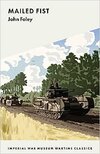
I don’t think this was the official intent, though. The deep-wading manual gives the impression the whole crew is meant to be on board, but I think it’s a safe bet that the crews would judge the relative dangers for themselves when deciding whether or not toFrom what I have read, and without looking back through, I think one of the pictures you have posted confirms this, only the driver would be in the tank when coming off the landing craft into the water, the rest would sit on top just in case, then get in once on solid ground.

Luckily, I have the official manual for this particular tankI’ve read that as well, though the commander would still be hooked up to the intercom set…..apparently there was a switch on the dash that would blow the waterproofing off when they reached land.
 (Well, not the AVRE but the regular Churchill, but that can’t have been very different.)
(Well, not the AVRE but the regular Churchill, but that can’t have been very different.)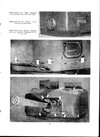
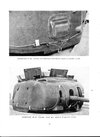
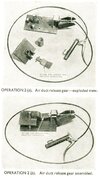
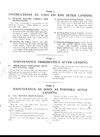
 This was not possible with an AVRE, of course, as it had nothing but HE in the first place. But a bit of Cordtex around the outside of the mortar muzzle would work fine, I imagine.
This was not possible with an AVRE, of course, as it had nothing but HE in the first place. But a bit of Cordtex around the outside of the mortar muzzle would work fine, I imagine.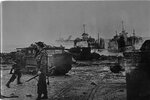
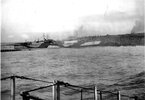
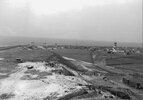
I ordered before from them and were ok to deal with.Hoping they dont take too long to arrive.But ive got to get kits etc before i start.Might start easy by doing an Iraqi Mark v11 of the 1950s.I saw a Jordanian one on the i modeller site but im not sure if Jordan used them.Maybe the modeller got it mixed up with an Iraqi one.You’ll be building them sometime next year, thenWell, it’s not that bad, but count on several (two to four or so) months before you get them in the mail, very neatly and tightly wrapped in packing paper.
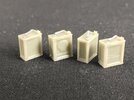

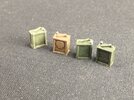
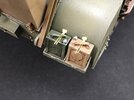
Thanks for that Jakko, great photos as well .I suspect they had severely underestimated how bad the landing “beach” was going to be. It’s a sandy beach today, but in 1944 it was actually the ruins of the dyke that had kept the sea at bay for over 500 years, and that been gradually built up over all that time. Most of the “beach” was not sand but mud from the clay core of the dyke (the soil on Walcheren being mostly heavy, grey clay) that had by 1 November 1944 been saturated by the sea for four weeks. Add to this large blocks of basalt that littered the clay, from the revetment on the outside of the dyke, and you have very difficult going for any vehicle, even tracked ones.
Plus, of course, the intent was never to land the tanks here anyway — they were supposed to land a hundred metres or so further north, where the dyke was intact. That is to say, in the same area where these three LCI(S)’s [Landing Craft, Infantry (Small)] were photographed:
View attachment 485978
These were the very first ashore, the troops on the dyke are men from No. 41 (RM) Commando. As you can see, the dyke is not overly damaged here, so this would have let the tanks simply drive up it with no chance at all of bogging down: the worst driving hazard would have been slipping down the basalt slope. However, the intensity of the German fire caused the LCTs carrying the tanks to go further south, into the gap that had been bombed into the dyke, because they were sheltered from the gunfire there (but not the mortars, of course).
I just remembered I have a photo of what the dyke looked like before the RAF blasted it to bits on 3 October 1944:
View attachment 485975
This photo looks to the west-northwest, approximately, from a high dune southeast of the village where the Germans had built a radar station; notice the trenches, AA gun etc. in the foreground. The initial gap that was bombed in the dyke ran from the windmill (which was destroyed in the bombing) to about where the light on the dyke is (the post with supports, between the mill and the fishing boats). The intended tank landing beach was to the right of the windmill as seen here, but in fact they landed to its left.
The gap was widened later by a second bombing raid and the scouring of the tides going in and out twice a day. None of the buildings you can see on the right were more than ruins after the first attack. My great-uncle and -aunt and their toddler son lived in one of them, which is probably just in the photo (but it’s hard to say); after the bombing, their house had gone, nothing but a huge, water-filled bomb crater in its place. They themselves were nowhere to be found until his brother (my grandfather) decided to dredge the crater and found all three without so much as a scratch on them, except my great-aunt had a broken leg.

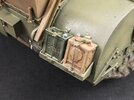
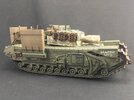
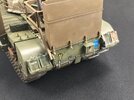
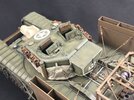

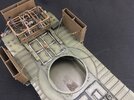

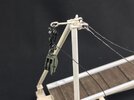
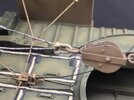
 The problem is that AFV Club moulded a hole in only one side of the clasps, then supply pins that are exactly long enough to fit. Had they put the hole all the way through both sides and supplied longer pins, there would be zero risk of this happening. My solution was to run a 1 mm drill through the hole and use it to open up the other side as well, then put in a length of 1 mm brass rod, as you can see in the photo. Once I had attached the block to the cable with that, I superglued it in place. I will have to see about glueing the ring from the AFV Club pin to it; I tried, but it didn’t want to cooperate yet, so I may end up leaving it off entirely.
The problem is that AFV Club moulded a hole in only one side of the clasps, then supply pins that are exactly long enough to fit. Had they put the hole all the way through both sides and supplied longer pins, there would be zero risk of this happening. My solution was to run a 1 mm drill through the hole and use it to open up the other side as well, then put in a length of 1 mm brass rod, as you can see in the photo. Once I had attached the block to the cable with that, I superglued it in place. I will have to see about glueing the ring from the AFV Club pin to it; I tried, but it didn’t want to cooperate yet, so I may end up leaving it off entirely.For FULL Forum access you can upgrade your account here UPGRADE
